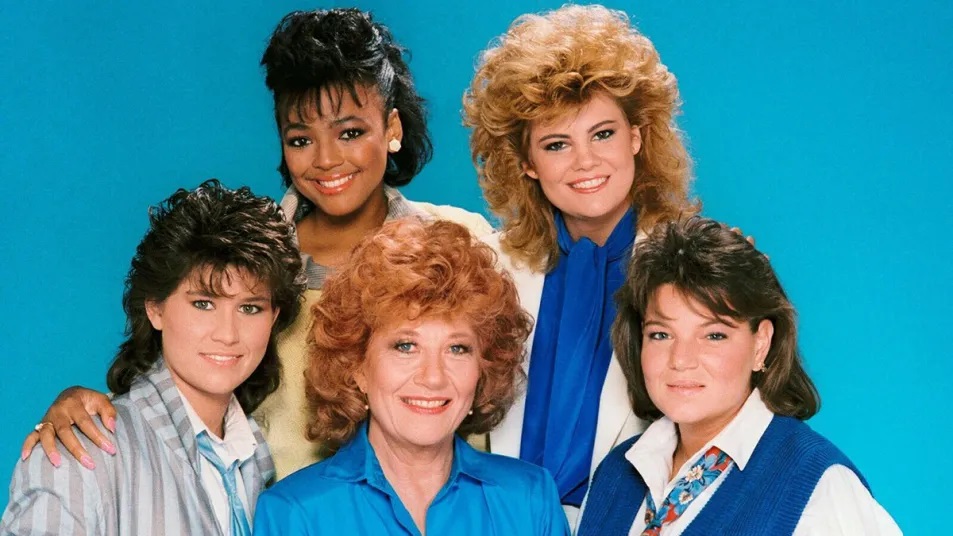Life Lessons from Eastland: The Impact of the Facts of Life Cast

“The Facts of Life” is a beloved American sitcom that aired from 1979 to 1988, capturing the hearts of viewers across the nation. The show, created by Dick Clair and Jenna McMahon, served as a spinoff of the immensely popular “Diff’rent Strokes,” and quickly carved out its own niche in television history. Centered around the exciting and often challenging lives of students at the fictional Eastland School, an exclusive all-girls boarding school in Peekskill, New York, the series became a cultural touchstone for those growing up in the late 70s and early 80s.
Not only did “The Facts of Life” entertain audiences, but it also provided valuable life lessons through its engaging storylines and memorable characters. The show’s innovative portrayal of adolescence, diversity, and personal growth resonated deeply with viewers, making it a significant part of television history.
With a cast that included memorable characters like Mrs. Garrett, Blair, Jo, Natalie, and Tootie, Eastland School became more than just a backdrop—it became a place where vital lessons about friendship, empowerment, and resilience were learned. This blog will delve into the impactful narratives and cultural significance of “The Facts of Life,” exploring the timeless lessons imparted by the iconic cast of Eastland.
Childhood and Adolescence
“The Facts of Life” expertly portrayed the challenges and triumphs of growing up through its endearing characters and relatable storylines. One notable lesson on personal development is seen through the character of Blair Warner, who, despite her privileged background and initial superficiality, learns humility and empathy over the series’ run. Key storylines addressing common adolescent issues include Natalie’s struggle with body image and self-esteem, which highlighted the importance of self-acceptance.
Additionally, Jo’s navigation of friendships and peer pressure provided powerful examples of staying true to oneself in the face of external influences. The show didn’t shy away from tackling self-discovery, as evidenced by Tootie’s journey of exploring her identity and ambitions, showing viewers that growth often involves facing difficult truths and making tough decisions. These narrative arcs offered valuable insights into the complexities of adolescence, resonating with audiences and teaching important life lessons.
Diversity and Inclusion
One of the standout elements of “The Facts of Life” was its inclusive and diverse cast, which brought a multitude of perspectives and experiences to the forefront. The show made a significant impact by addressing topics like race, socio-economic differences, and disability, promoting a culture of acceptance and understanding.
For example, Tootie Ramsey, portrayed by Kim Fields, was a pioneering character in media representation. As one of the few African-American characters on prime-time television during that era, Tootie’s presence alone broke new ground, and her storylines often tackled issues of race and identity with sensitivity and honesty.
Additionally, episodes featuring Natalie and her experiences with weight and self-image, along with Jo’s working-class background, highlighted the broader spectrum of societal issues, encouraging viewers to embrace and appreciate differences. These story arcs not only provided valuable lessons in empathy and acceptance but also set the stage for future television programs to continue exploring diversity and inclusion with the same level of dedication and thoughtfulness.
Empowerment and Independence
“The Facts of Life” played a pivotal role in shaping viewers’ perceptions of female empowerment and gender roles through its depiction of strong, independent female characters. Each character showcased unique strengths and ambitions, providing diverse role models for young women. Blair’s journey from a self-centered heiress to a responsible individual who champions others’ needs is a testament to her growth in independence.
Jo’s resilient spirit and determination to succeed in a male-dominated field highlighted the importance of perseverance against societal expectations. Episodes centered on the characters striving for their ambitions often laid bare the obstacles they faced, such as balancing personal aspirations with societal pressures.
By confronting these challenges head-on, the show conveyed that resilience and self-belief are key to overcoming barriers. Such narratives not only entertained but also inspired viewers to reconsider traditional gender roles, fostering a generation of young people who felt empowered to pursue their dreams regardless of societal constraints.
Dealing with Difficult Issues
“The Facts of Life” was not just a show about everyday adolescent experiences; it also boldly addressed significant, sometimes controversial topics such as substance abuse and mental health. The show’s willingness to confront these issues head-on was groundbreaking at the time, providing a platform for candid discussions that were rarely seen on television.
Storylines like Natalie’s experience with blood pressure medication and Blair’s brush with sexual assault were handled with an unprecedented level of sensitivity and honesty. By presenting these serious issues authentically, the show facilitated important conversations among families and peers, helping to de-stigmatize topics that were often considered taboo.
This forward-thinking approach not only reflected the struggles of the era but also helped to educate and prepare viewers for real-life challenges. The episodes dealing with these heavy subjects remain some of the most impactful, resonating even today for their bravery and foresight in addressing critical issues.
Lifelong Friendships
The friendships among the main characters in “The Facts of Life” were not only central to the show’s narrative but also served as a powerful testament to the importance of loyalty, support, and love among friends. Characters like Blair, Jo, Natalie, and Tootie exemplified true camaraderie, often standing by each other during times of personal crisis and growth.
For instance, Jo’s unwavering support for Blair during her family troubles, and Nat’s comforting presence when Tootie struggled with self-doubt, showed viewers the irreplaceable value of having dependable friends. These bonds mirrored real-life relationships formed among the cast members, which added a layer of authenticity to their performances.
Kim Fields and Lisa Whelchel, who portrayed Tootie and Blair respectively, have spoken about their enduring friendship off-screen, underscoring how the genuine connections among the cast enriched the show’s heartfelt portrayal of lifelong friendships. These authentic relationships resonated strongly with viewers, reinforcing the message that true friendship is an essential cornerstone of one’s life journey.
Legacy and Influence
“The Facts of Life” has left an indelible mark on television and media, shaping the landscape for subsequent shows. Its long-term influence is evident in the diverse and inclusive casts seen in modern series, as well as in the continued exploration of pressing social issues within youthful narratives.
Testimonials from fans and reflections from cast members reveal a deep appreciation for the show’s legacy, with many citing it as a formative influence in their personal lives and professional choices. Actress Kim Fields has frequently noted how the series’ dedication to authentic storytelling allowed her to grow both as an actress and as an individual.
Fans often express gratitude for the life lessons imparted by the show, from resilience and empowerment to the importance of friendship and understanding. These timeless lessons remain profoundly relevant today, underscoring the series’ enduring impact and its contribution to nurturing empathetic and socially-conscious audiences.
Conclusion
Reflecting on the legacy of “The Facts of Life”, it’s clear that its impact transcends mere entertainment. The series illuminated crucial life lessons through its diverse, relatable characters and their heartfelt journeys. Blair’s transformation from a privileged socialite to a compassionate advocate, Jo’s gritty determination in a challenging society, and the unbreakable bonds of friendship among the Eastland girls collectively imparted lessons in empathy, resilience, and the enduring value of authentic connections. The show’s willingness to tackle difficult issues such as race, self-image, substance abuse, and mental health further enriched its narrative, creating a platform for pivotal conversations and fostering a more inclusive mindset amongst its audience.
As we celebrate these lessons, we invite you to reflect on your own growth and consider how media has influenced your personal development. “The Facts of Life” not only entertained but also educated, nurturing a generation to embrace diversity, persevere against odds, and value true friendships. Think about the shows that have shaped your journey and the lasting impacts they have had on your worldview and personal growth.
We encourage you to share your favorite moments and lessons from “The Facts of Life”. What episodes or storylines resonated with you the most? How did the characters’ experiences mirror or influence your own? Your reflections can inspire others and honor the legacy of a show that continues to hold a special place in our hearts. Let’s continue the conversation and celebrate the timeless lessons that “The Facts of Life” taught us.




